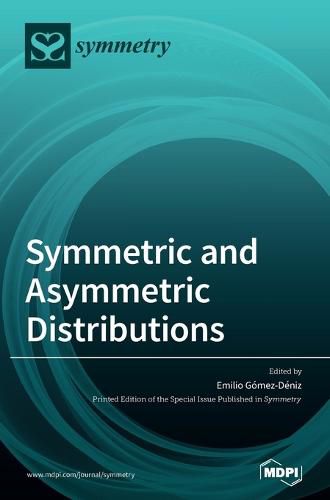Readings Newsletter
Become a Readings Member to make your shopping experience even easier.
Sign in or sign up for free!
You’re not far away from qualifying for FREE standard shipping within Australia
You’ve qualified for FREE standard shipping within Australia
The cart is loading…






This title is printed to order. This book may have been self-published. If so, we cannot guarantee the quality of the content. In the main most books will have gone through the editing process however some may not. We therefore suggest that you be aware of this before ordering this book. If in doubt check either the author or publisher’s details as we are unable to accept any returns unless they are faulty. Please contact us if you have any questions.
In recent years, the advances and abilities of computer software have substantially increased the number of scientific publications that seek to introduce new probabilistic modelling frameworks, including continuous and discrete approaches, and univariate and multivariate models. Many of these theoretical and applied statistical works are related to distributions that try to break the symmetry of the normal distribution and other similar symmetric models, mainly using Azzalini’s scheme. This strategy uses a symmetric distribution as a baseline case, then an extra parameter is added to the parent model to control the skewness of the new family of probability distributions. The most widespread and popular model is the one based on the normal distribution that produces the skewed normal distribution. In this Special Issue on symmetric and asymmetric distributions, works related to this topic are presented, as well as theoretical and applied proposals that have connections with and implications for this topic. Immediate applications of this line of work include different scenarios such as economics, environmental sciences, biometrics, engineering, health, etc. This Special Issue comprises nine works that follow this methodology derived using a simple process while retaining the rigor that the subject deserves. Readers of this Issue will surely find future lines of work that will enable them to achieve fruitful research results.
$9.00 standard shipping within Australia
FREE standard shipping within Australia for orders over $100.00
Express & International shipping calculated at checkout
This title is printed to order. This book may have been self-published. If so, we cannot guarantee the quality of the content. In the main most books will have gone through the editing process however some may not. We therefore suggest that you be aware of this before ordering this book. If in doubt check either the author or publisher’s details as we are unable to accept any returns unless they are faulty. Please contact us if you have any questions.
In recent years, the advances and abilities of computer software have substantially increased the number of scientific publications that seek to introduce new probabilistic modelling frameworks, including continuous and discrete approaches, and univariate and multivariate models. Many of these theoretical and applied statistical works are related to distributions that try to break the symmetry of the normal distribution and other similar symmetric models, mainly using Azzalini’s scheme. This strategy uses a symmetric distribution as a baseline case, then an extra parameter is added to the parent model to control the skewness of the new family of probability distributions. The most widespread and popular model is the one based on the normal distribution that produces the skewed normal distribution. In this Special Issue on symmetric and asymmetric distributions, works related to this topic are presented, as well as theoretical and applied proposals that have connections with and implications for this topic. Immediate applications of this line of work include different scenarios such as economics, environmental sciences, biometrics, engineering, health, etc. This Special Issue comprises nine works that follow this methodology derived using a simple process while retaining the rigor that the subject deserves. Readers of this Issue will surely find future lines of work that will enable them to achieve fruitful research results.